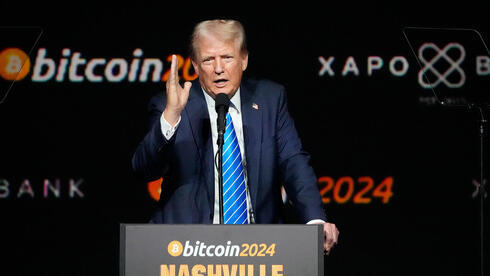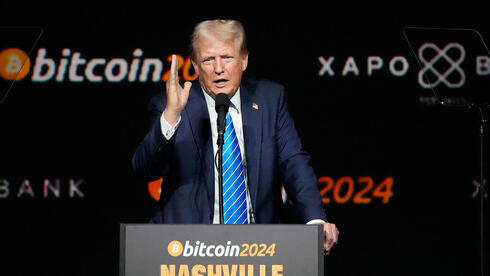
How deepfakes are misleading swing voters in the U.S. elections
As the U.S. election approaches, deepfake content is becoming more pervasive, influencing voters who have not yet decided whom to support, posing a threat to one of the fundamental pillars of the democratic process and easing the path for anti-democratic forces to ascend.
The biggest concern arising from the widespread use of deepfake content (AI generated images, videos, or audio clips) is not that it will be possible to create fictional events and convince people of their truth, but that the public will no longer be able to distinguish between reality and fiction. As a result, even real, well-documented events could be doubted. This was recently illustrated by none other than Donald Trump.
On Thursday, Democratic presidential candidate Vice President Kamala Harris and her running mate, Minnesota Governor Tim Walz, attended a campaign event in Detroit. They were greeted at the airport by a crowd of 15,000, documented in photos and videos taken by numerous attendees as well as local, national, and international media. In all of them, a large, enthusiastic crowd can be seen cheering for Harris and Walz.
However, according to Trump, this event didn’t happen at all. Has anyone noticed that Kamala CHEATED at the airport?” he raged on his failing social media platform Truth Social. “There was nobody at the plane, and she ‘A.I.’d’ it, and showed a massive ‘crowd’ of so-called followers, BUT THEY DIDN’T EXIST!”
Trump, who is obsessed with the number of attendees at his events and has previously lied about the size of his crowds, centered his claim on a photo he says is based on AI. The photo does indeed look odd, and the people in the crowd resemble those often generated by AI systems. As Trump claims, the large crowd isn’t visible in the plane’s reflection.
However, a check by Snopes revealed with a very high probability that the photo is real. AI image detection systems identified it as a real photo with very high certainty, and elements in the photo (such as the image of the plane appearing on smartphone screens in the photo) also support its authenticity. As for the absence of the crowd in the plane’s reflection, it’s likely a result of a visual illusion concerning the crowd's distance from the plane in reality, compared to what was captured in the photo along with the reflection angle, which only reflects the plane’s immediate surroundings.
Additionally, the Harris campaign confirmed that it was an authentic photo. Even if it wasn’t, even if it were indeed an AI-generated photo that went viral, there are still plenty of other genuine photos and videos that prove beyond any doubt that a crowd of many thousands awaited Harris and Walz upon their arrival.
But none of this truly matters to Trump’s staunch supporters. They claim the photo is fake, make various dubious analyses to prove it, and continue to spread and promote the baseless claim on various social media platforms. Nothing will convince them that the photo or the event was real.
But they’re not the problem. The problem is the people in the middle - those who aren’t deeply entrenched in either Trump’s or Harris’s camp, the undecided voters trying to make a decision about whom to vote for in November. They see the claims made by both sides and likely find it hard to determine who is telling the truth and who is lying. When it’s impossible to decide between truth and lies, when it’s unclear if an image, video, or audio clip is reality or fiction, one of the foundations of the democratic process is undermined, making it easier for anti-democratic forces to rise to power.
This is a strategy that Trump’s supporters will not hesitate to adopt, and it’s likely that in the less than three months remaining until the election, we will see other similar cases. In fact, there’s no need to speculate - it’s already happening. Amid the wave of false reports surrounding Harris’s visit to Detroit, Trump supporters began spreading a clear AI-generated image that they claimed was presented as real by the Harris campaign. In reality, it’s an image created by a satirical website which was never distributed by the Harris campaign.
At least some of those sharing the image know this but aren’t bothered by it. Their goal is to blur the line between reality and fiction as much as possible, to sow doubt and despair among undecided voters, and to turn the election campaign from a campaign about relevant issues based on verifiable facts into a mud-slinging contest where nothing that’s said or shown has any value because it’s impossible to know whether it’s real or fake.














